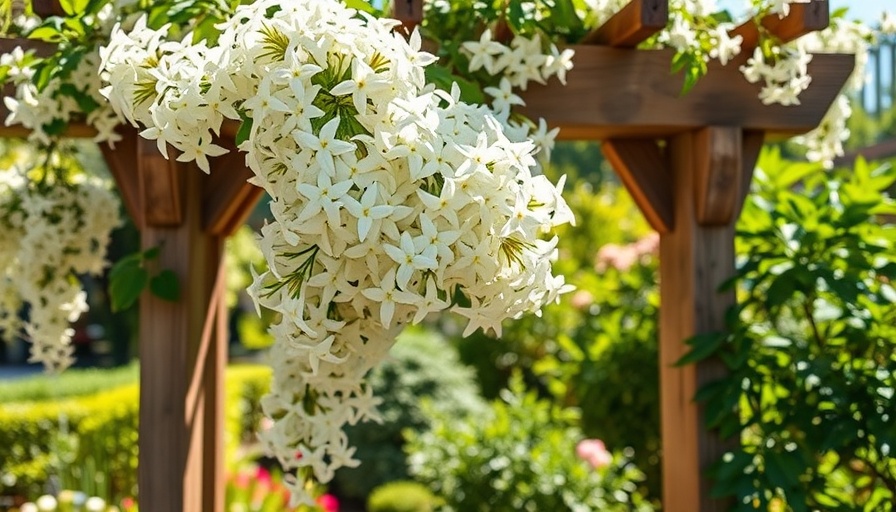
Discovering Jasmine: The Perfect Plant for Your Home
If you've ever walked through a garden filled with the intoxicating scent of jasmine, you know how captivating this plant can be. With its delicate, pinwheel flowers in shades of white, pink, and yellow, jasmine (Jasminum spp.) is more than just an ornamental vine; it's a fragrant addition to any garden or home. Ideal for both inexperienced and seasoned gardeners, jasmine brings a touch of tropical elegance and a promise of sweet aromas into living spaces.
Long-Lived and Lush: The Plant's Characteristics
True jasmines are admirable for their long lifespans and climbing nature, needing only a trellis or other support to thrive. Their narrow stems enable them to twine around various structures, allowing the plant to grow vertically and beautifully. Most varieties thrive in zones of 7 to 11, yet some are even hardy enough for USDA Zone 6, indicating their versatility and resilience.
Benefits of Growing Jasmine: More Than Just Beauty
Jasmine plants not only add aesthetic value; they attract crucial pollinators like bees, butterflies, and hummingbirds to your garden, playing a vital role in sustaining local ecosystems. Plus, they are pest-resistant, making them a practical choice for any home gardener. You can cultivate these fragrant vines outdoors amidst flower gardening, or bring them inside as houseplants, further enriching your home environment.
Creating the Perfect Growing Conditions
To achieve the best results when cultivating jasmine, careful attention to the growing conditions is essential. These plants thrive in full sun to part shade and prefer loose, well-draining soil with a pH ranging from 6.0 to 8.0. While jasmine enjoys moderate watering, it’s crucial to ensure that excessive moisture doesn’t accumulate at the roots, which can lead to rot. Setting up your growing area correctly will promote healthy plants that flourish through the growing season.
Thriving Through the Seasons: Year-Round Jasmine Care
Regardless of whether you’re nurturing jasmine indoors or outdoors, consistent maintenance is key. During the summer, these plants require regular pruning to stimulate new growth and maintain their shape. If you’re gardening in colder climates, consider providing additional protection in the winter months to help your plants withstand chillier temperatures and ensure their longevity.
Jasmine's Place in the Community: More Than Just a Plant
As we emerge from the challenges of the past few years, reconnecting with nature through gardening can be a profound source of healing. Cultivating jasmine not only enhances your personal space but serves as a reminder of self-sufficiency and the importance of nature in our lives. It’s a plantscape that not only beautifies but also serves to uplift spirit and foster connections within your community.
Simple Steps for Propagation
Propagating jasmine can be a rewarding experience. There are several propagation methods, including stem cuttings and layering. By cutting a healthy stem during the growing season and placing it in a pot with suitable soil, you can expect growth within a few weeks. Alternatively, layering involves bending a lower stem to the ground and covering it with soil while leaving the tip exposed. As roots develop, you’ll have another vibrant jasmine plant to treasure.
Conclusion: Embrace the Harmony of Jasmine in Your Life
Whether nurturing jasmine within your garden or allowing it to grace your indoor spaces, these plants invite beauty and serenity into your life. With minimal care and a touch of environmental consciousness, you can turn any area into a fragrant retreat. As you grow these delightful plants, remember that you are nurturing more than just flowers; you are cultivating your connection to nature, community, and self-sufficiency.
 Add Row
Add Row  Add
Add 




 Add Row
Add Row  Add
Add 

Write A Comment